IndiGo’s Big ₹9,987 Q2 Loss Shakes Aviation. Can Indigo Bounce Back Or Is Indigo Just Moving Out Of Control?
Mumbai: InterGlobe Aviation, the parent company of IndiGo, said on Wednesday that it had a net loss of ₹9,987 crore in the June-ended quarter of fiscal year 2024-25. The airline reported its first quarterly loss in two years, compared with ₹7189 crore profit reported during the same period last year. There are numerous operational difficulties and growing expenses the airline has been encountering alongside the trends in the external market, which might explain the reasons behind this loss. It further looks at the earlier episodes which may have influenced the performance of IndiGo. The article further goes ahead to delve into the perception of the customers regarding the airline.
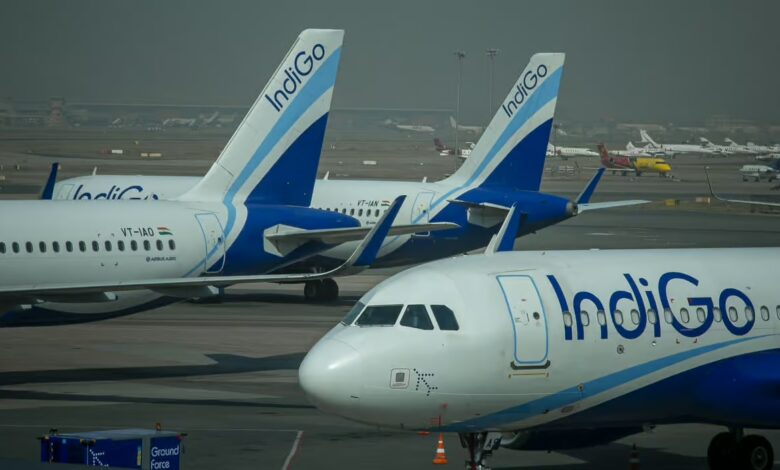
IndiGo is India’s leading airline by market share. The Indian aviation sector witnessed a major shock from IndiGo after it declared the loss for the second quarter of the fiscal year 2024-25 stood at a staggering ₹9,987 crore. This report shocked many, as IndiGo hadn’t registered a loss in more than two years. The airline had recorded profit just last year to the tune of ₹7189 crore. The swing from profit to deep losses was no fluke, nor one or two bad decisions taken by the management on finances. It reveals the tangled web of operational issues, rising costs, and external pressures that shape the turbulent skies IndiGo is facing today.
The Loss Breakdown: How Did IndiGo End Up Here?
To understand why IndiGo incurred financial losses in Q2, we need to look closely at its cost structure, the operational issues that plagued it, and economic factors affecting the airline industry at large.
For any airline, fuel prices are one of the biggest operational costs; for IndiGo, it’s no different. The operating cost for the airline is up sharply in this quarter, increasing by around 13% year-over-year. Global crude oil has been on the rise thanks to geopolitical tensions, added to which is India’s high tax on ATF and has taken a heavy hit on IndiGo.
The increase in fuel prices directly hits the bottom line for airlines. Other than this, fuel expenses are harder to manage or reduce since they are a market-dependent component. For IndiGo, fuel alone accounted for over one-third of total expenses, and the increase in these prices significantly contributed to its loss this quarter.
India’s aviation sector is unusually burdened with high taxations on ATF. So, with the majority of narrow-body aircraft in its fleet, though efficient for short-haul routes, IndiGo simply cannot make up for every fuel price hike. Even when the price of crude oil rises, IndiGo’s profit margins immediately plummet.
And if there are more problems, IndiGo was also further bogged down by some massive operational setbacks. The biggest was the grounding of nearly 75 aircraft – roughly 20% of its fleet – that were primarily grounded because of Pratt & Whitney engine issues. Problems with Pratt & Whitney engines have now become an epidemic for IndiGo.
Grounding such a large-scale aeroplane was immediately crippling, both in terms of airlift and revenues. With fewer aeroplanes lifting into the air, obviously, few tickets were being sold as well, translating immediately into a revenue blow for the company. More relevant to this discussion is what lost income meant when other operators had the capacity for take-offs to carry high-ticket travellers at peak demand hours: the loss went largely and directly to its peers’ coffers.
IndiGo had to lease more aircraft on a temporary basis to control this problem. Leasing is an expensive option, and the rental cost of such aircraft increases IndiGo’s rental costs manifold. Second, these groundings result in higher maintenance costs, as IndiGo is making efforts to resolve the problems its Pratt & Whitney engines.
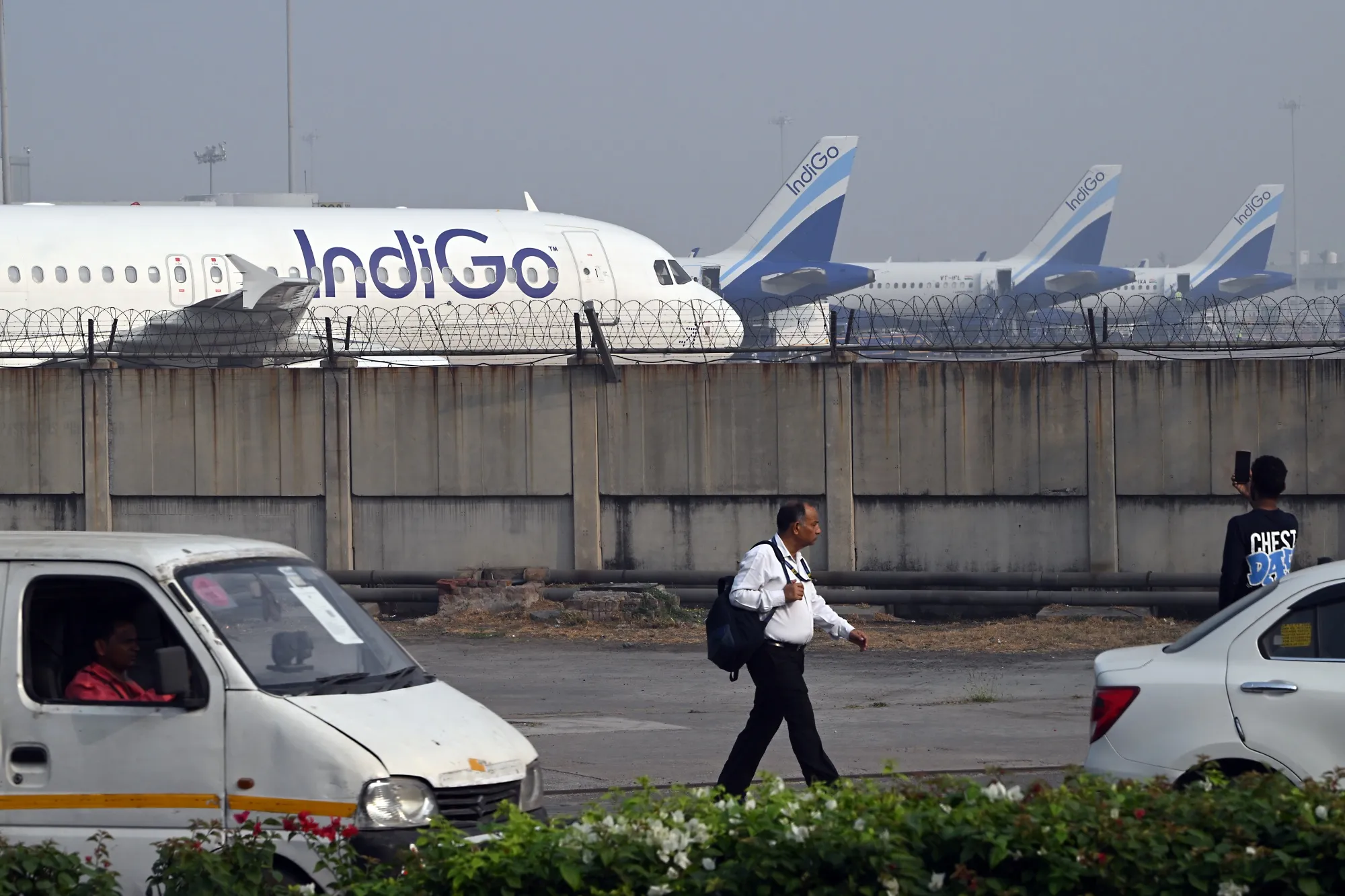
Aircraft maintenance and rental costs skyrocketed as well. IndiGo’s maintenance costs rose by nearly 30% as the airline struggled to meet the regulatory and safety requirements. The idled aircraft, with replacements on lease, added further pressure to the bottom line of IndiGo.
As was to be expected, aircraft rentals abound because IndiGo had no choice but to lease most of its planes to fill the vacant inventory in its fleet. That apart, leasing aircraft is infinitely more expensive than owning those aircraft, and a no-frills airline like IndiGo that prides itself on cost efficiency is clearly not going to enjoy better chances of profitability with all that rental and maintenance over time.
Traditionally, the second quarter of the fiscal year is a low season for airlines, especially in India. After the summer holiday peak, demand for air travel is low during this period. IndiGo, therefore entered this quarter with the disadvantage of low seasonal demand that impacted its load factors and revenue per available seat kilometre.
Thus, IndiGo has witnessed revenue of only 14 per cent that was less than estimated during the quarter last year. According to analysts, in the estimates they made, their revenue stood at ₹17,254 crore, however, they could manage to acquire ₹16,970 crore this time. The seasonal slump occurred during the months in which the airline couldn’t depend on peak passenger volume to absorb the growing expense-another disappointing financial result at the mercy of this quarter.
IndiGo enjoyed a dominant advantage as the low-cost leader having the largest market share in India for a long time. Competition has, however, intensified lately. Some of the newer low-cost carriers and increased routes by international airlines have squeezed the profit margins of IndiGo by challenging its pricing strategies.
IndiGo’s yield improved a little by 2.3%, which means revenue per kilometre per seat, but it did not offset the high-cost base. With increasing competition in the Indian market coming from Air India, Go First, and other foreign players, it made IndiGo compete more aggressively on fares even when it was going through an increasing cost situation.
Past Incidents: Have We Seen This Before?
The worst spell in Q2 of IndiGo does not bring with it the first time for a while when the airlines find adverse conditions. The same following this, many incidents kept happening and started impacting the financials of IndiGo by making them swing between profitability at times.
Covid 19
Just like any other airline worldwide, COVID-19 was a pandemic crisis for IndiGo. Lockdowns, movement restrictions, and low travelling demand grounded the airlines, bringing the flying of the airplane industry to an absolute stop. This affected the balance sheet of the airline negatively, and reportedly it stated to have lost ₹5,000 crores of losses in fiscal year 2020-21.
It also left the airline to cut down the scale of its operations, reduce the number of its employees, and even recover the salaries paid to sustain the company. The pandemic wounds would take some time to heal, but IndiGo was still coming out of those shocks, and the remaining ones are still present. It showed how vulnerable IndiGo was in comparison to its cost structure and the sensitivity of the aviation business towards external shock factors.
Regular Engine Failures
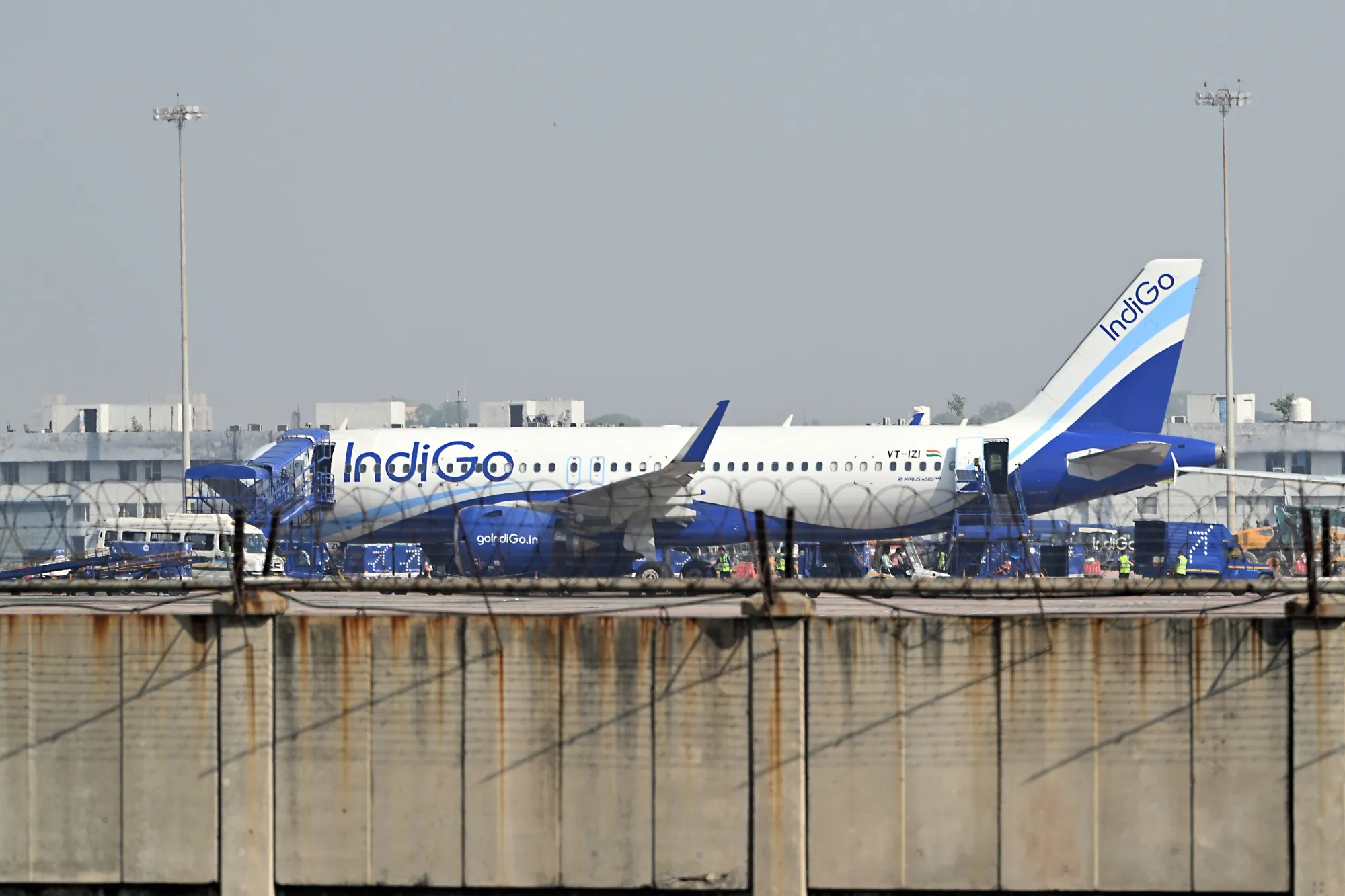
The airlines faced quite a long history of trouble with the engine, but Pratt & Whitney engines failed most of the time. The closest experiences related to that on-site involved a couple of flight delays and grounds of aircraft which resultantly added up some expenses within the maintenance department. As a matter of fact, the incidents bring cost in terms of dollars; nonetheless, they reduce confidence with the customers. Indicative of IndiGo is the fact that almost half of IndiGo grounds in Q2 occurred in the form of repetition by engines.
Pratts & Whitney engines might be efficient but this has proved to be costly, a bit more than what was expected at the time of selection for IndiGo. Each instance of an engine going to unscheduled repair adds up extra costs and possible losses due to aircraft layover. The problem persisted even with regular attempts made to correct these issues, which speaks of systemic issues in the fleet strategy of IndiGo.
Indian aviation is highly regulated. Change in any government policy affects airlines a lot. Periodical increases by AERA in airport charges increase the cost of operations for these airlines. Every rupee spent in airport fees reduces IndiGo’s low-cost advantage.
It can also explain its regulation. While launching a new route, IndiGo has to adhere to government norms; such restrictions might curb IndiGo’s further expansion plans sometimes. It further depends on international airways agreement if IndiGo desires to expand its existence across the border, up to which level, for how much more time IndiGo can sustain this and which limit IndiGo has to follow while adopting an expansion strategy in international airlines.
The problems that IndiGo is facing are not just of financial or operational nature, but also reputation-based. In theory, IndiGo should enjoy a firm customer base since it is the market share leader in India’s aviation industry. However, mixed customer perceptions have complicated the relationship.
IndiGo is known to be on time. So, it makes the airlines extremely often among the safest airlines in India. Of all the reasons that have attracted so many passengers and most business travelers to board flights with IndiGo has to be its low cost-no-frills branding in which many passengers would accept lower comfort for a price.
However, operational efficiency at times has come in direct conflict with service customers. It is the careless IndiGo staff, the manner of handling complaints, and communication in case of any delay that have been the reasons for ire among complainants. “Low-cost” sometimes has turned into “low service” for passengers. At a time when customer experience is a critical differentiator in a market as competitive as today, the poor service reputation has become IndiGo’s liability.
IndiGo operates on the lowest base price for tickets. In this strategy sometimes, many hidden costs catch up with the passengers at their back. Some of them include extra baggage check in fee, seat selection, and meal charges while still airborne. These cost additions mean some customers feel cheated upon realizing it was a fare, after all.
This is a common add-on fee practice among low-cost airlines globally, but passengers may leave dissatisfied because what they pay does not represent their expected value for their journey. The disparity of the perceived and actual value for cost has driven customers away to other airlines for flights.
IndiGo Response: A Plan to Ride Out the Turbulence
IndiGo has taken note of this problem and implemented a strategy.
Recovering its grounded aircraft is one of the significant goals that the management of IndiGo has set. 75 grounded planes have been a very heavy financial burden, from lost revenue to additional leasing costs. With this in mind, IndiGo has collaborated closely with Pratt & Whitney to speed up the inspection and repair of the engines.
IndiGo diversifies its fleet mix and looks at other sources for engines to get out of dependence on Pratt & Whitney. It would incur short-term cost but would stabilize the fleet and not allow further groundings. Putting more investment into diversifying the fleet reduces the interruption in operational terms and reassures the passenger base.
Ancillary revenue improved a healthy 20.9% for IndiGo, adding up to ₹1,875 crore. The company is now keen to generate revenue by monetizing the willingness of passengers to pay for more comfort and convenience through additional options for in-flight services, priority boarding, and premium seating.
International markets also form a part of the growth of IndiGo, wherein yields are much higher; relatively, the competition is a bit lesser as compared to the domestic market, which has now saturated fully. So, based on popular routes between the Middle East, South East Asia, and India to Europe, IndiGo is targeting a more profitable, though less price-sensitive market segment.
In response to these shifting demands of consumers, the airline would introduce its business-class service. As a major step away from its low-cost model, it would also attract a premium customer willing to pay extra for high value without losing the airline benefit. Packaging this business-class push into more international routes encapsulates IndiGo’s strategy to dilute its reliance on what is a relatively highly competitive domestic sector to generate revenue streams.
What will happen in IndiGo? This is when future prospects are examined to learn from the mess of an airline industry suffering under one player’s price control measures.
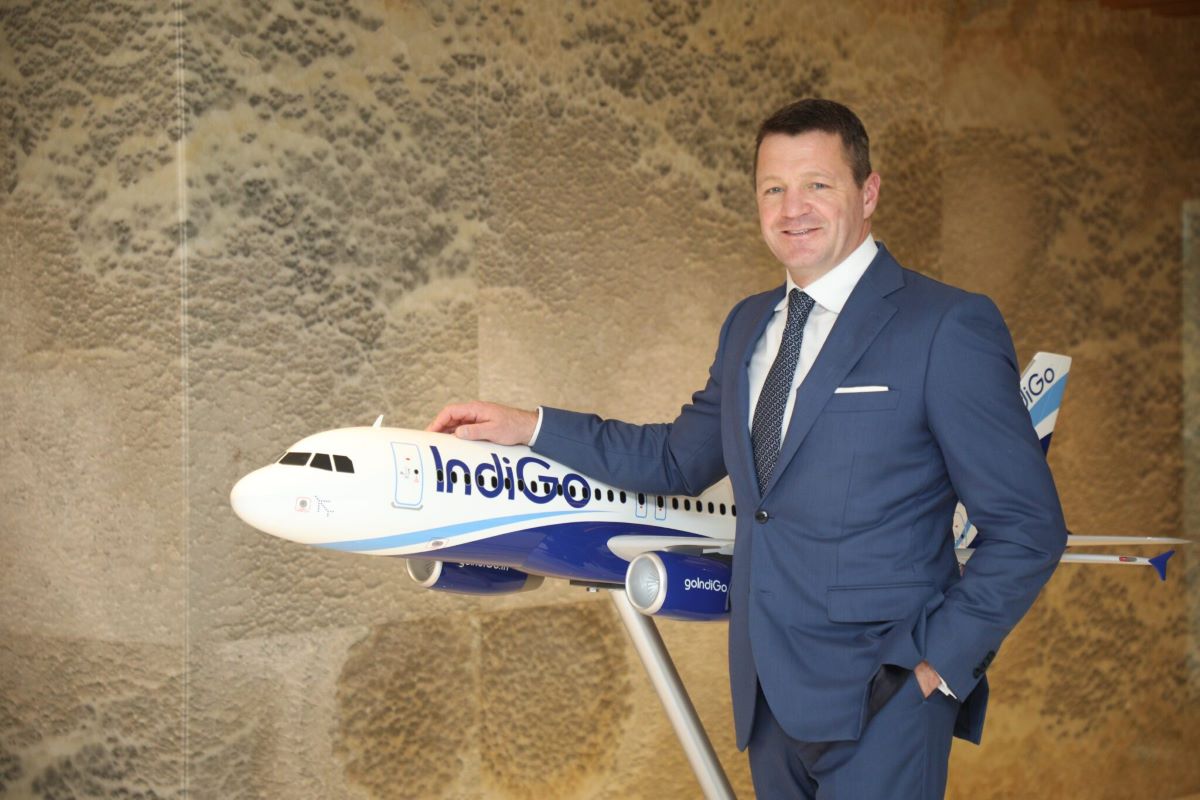
The lost capacity of IndiGo will be regained as the repair work on the engines is in progress and the grounded planes return to service. It will operate more flights and increase revenue. However, recovery will take time as this has been going on for several years with Pratt & Whitney engines.
Oil prices are pretty volatile and sensitive to the global geopolitics and ripples in the currency market. So, the increased oil price will continue squeezing the financial health of IndiGo. Only through a very, very aggressive hedging on fuel prices can it steady itself through these waves of price volatility.
Inflation and many other factors of the economic environment will impact IndiGo in the future. Economic slowdowns often reduce discretionary spending, or alternatively, fewer people choose to fly. So, IndiGo has to stay prepared for any macroeconomic challenges that might challenge consumer demand for air travel.
The new entrants will challenge IndiGo to keep the competition going at its level of pricing. Low-cost carrier with ambitions of aggression Akasa Air is one among the new entrants which joins the market along with full service airlines that increase their fleet in the international routes, which will have competitive fares and services now from the established players across the globe which IndiGo will find very hard keeping the fare so low and yet contain costs too.
It can only get tougher with increasing competition as the Indian market for aviation matures. Traditionally, IndiGo’s advantage has been its leadership on cost. It must, however, maintain it for itself. Expansion beyond its borders and into business-class segments might help the carrier compete better on services more diversified.
IndiGo must upgrade its customer service if it is to win and hold onto its customers. The higher the entry of airlines into this market, the higher the passengers’ expectations will be of customer experience.
Critical areas for improvement will include the communication channels of delays, customer services, and onboard experience. Customer loyalty at all levels will reduce the urge to defect to a competitor if, as IndiGo believes it does, it puts its needs above those of others.
Is IndiGo worth flying? The perceptions and brand loyaltY
Indian travel market and market leader is IndiGo; yet, their brand perceptions in Indian markets have mixed hues.
Low cost is the synonym for most of IndiGo’s customers. Its no-frill model appeals to those wanting to travel but make savings. Unfortunately, this has led to complaints because of the evolving expectations of customers in recent years.
Where passengers love cheap prices, the compromise in quality of service creates disappointment for others. Much of the criticism on social media is centered on lumpy seating, fewer amenities, and inadequate entertainment systems. All this seems minor, but it creates customer dissatisfaction in a competitive market where other airlines deliver comparable pricing with additional incentives.
Indian travel market and market leader is IndiGo; yet, their brand perceptions in Indian markets have mixed hues.
Low cost is the synonym for most of IndiGo’s customers. Its no-frills model appeals to those wanting to travel but make savings. Unfortunately, this has led to complaints because of the evolving expectations of customers in recent years.
Where passengers love cheap prices, the compromise in quality of service creates disappointment for others. Much of the criticism on social media is on lumpy seats, fewer amenities, and inadequate entertainment systems. All this seems minor, but creates customer dissatisfaction in a competitive market where other airlines deliver comparable pricing with additional incentives.
IndiGo’s low-cost model is cutting back on services, but this usually happens at the cost of the satisfaction of the customers. The airliner needs to do better in reacting to its passengers when the flight becomes delayed, there is limited choice in-flight food options, and a communication gap is perceived during any hitch. Customer experience forms the very core of this business airline; therefore, a perception of being unconcerned has eroded its reputation.
Mishandled complaints and delayed refunds have portrayed an image of being rather indifferent to customers. Resolution of these service quality issues might help IndiGo create strong loyalty among the passengers willing to pay a little more for a better experience.
The airline thus, has gained the trust of most passengers as it does the operations punctually. A great number of travellers like the fact that it comes punctually. But comfort has taken a secondary place when reliability is more concerned in the case of business people and frequent flyers, thereby becoming one of their preferences. This reputation has however got slightly dented by repeated engine failure and grounded aircraft.
Secret lies behind the brand image built so successfully as a reliable on-time airline, to develop even more reliability of their fleet and minimise the chances for delay due to technology issues. Reliability being among the biggest selling factors today, retention of it enables IndiGo to enjoy such a market position.
What Does IndiGo’s Q2 Loss Portend for India’s Aviation Sector?
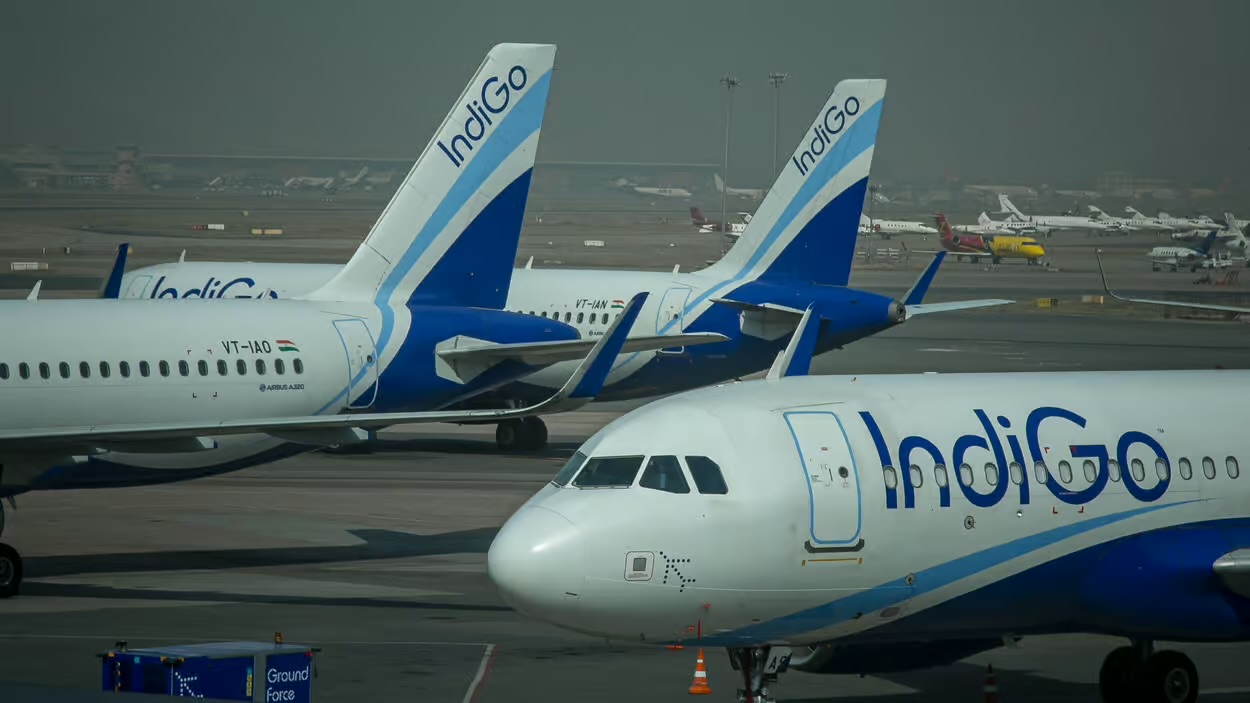
Such was the heavy loss that IndiGo incurred over this quarter. That might be more of a reflection of some of the other issues inherent in the country’s aviation industry, though the largest player in Indian aviation markets has a good low-cost model and commanding market shares.
More than a financial loss that this quarter depicts, the problems run way deeper that IndiGo faces in maintaining competitiveness.
IndiGo often had to focus on growth with stability. It expanded heavily, relied heavily on one engine provider, and cost-cutting. These strategies had served IndiGo well but are now showing cracks under the current pressures. IndiGo needs to reassess strategy, possibly quality over quantity.
These look like strategic moves by IndiGo since it is a push for business class and more inter-line international routes, though this would be risky and probably would call for more investments in the beginning.
Since the fact that IndiGo stands in a commanding position in Indian Aviation sector and that acts of IndiGo set trends among the other players of the industry is known, it is pretty much probable that the broader sections of the industry will read into IndiGo why issues of fleet management are turning out not so easy for them to handle, while managing their fuel costs becomes difficult and trying to experience better customer experiences. It is quite possible that practice changes initiated by IndiGo regarding the above issues shall possibly start broader changes across the industry as a whole. End.
All these issues must be addressed by IndiGo to redefine low-cost aviation in India perhaps forcing Indian airlines to provide cheaper options with fair customer service.
India is one of the world’s fastest-growing aviation markets, but that is a far cry from the vulnerability reflected by IndiGo. In reality, few airlines manage to generate true profits as a result of taxes, over-regulation, and the cost of operating. IndiGo serves as a reminder of how Indian aviation can turn volatile-in a market where even the biggest players, like SpiceJet and Jet, have found themselves in financial tides.
Huge scope is there for Indian airlines to grow; the demand in the country for air travel is growing, but in these challenges, they should move wisely. The growth of India’s aviation sector can only be sustainable if this happens to be the case in the future, and hence IndiGo’s resilience will act as a benchmark.
For a succinct summary, the Q2 loss amount of ₹9,987 crore by IndiGo reminds the established players that even such statured players are not exempt from market volatilities or operational glitches. This is the only response the airline will chart its course through in regard to its grounded fleet, increasing costs, and changing preferences of its consumers. It was the IndiGo story which went on to depict a tightrope walked by the aviation industry on cost control, growth, and customer delight. IndiGo will emerge out of this challenging time only when the airline moves fast and smartly to regain its profit position and leadership in Indian skies.




